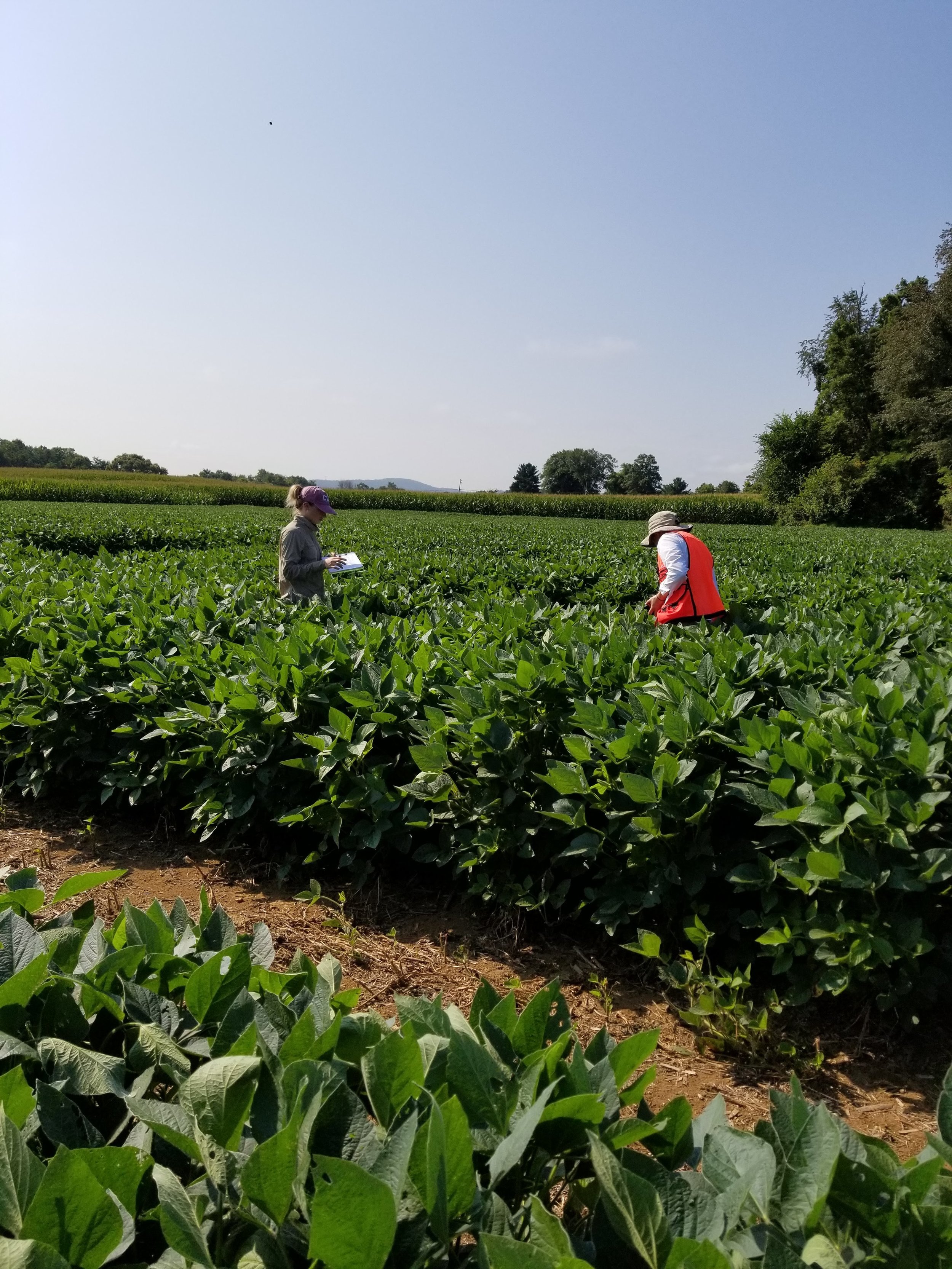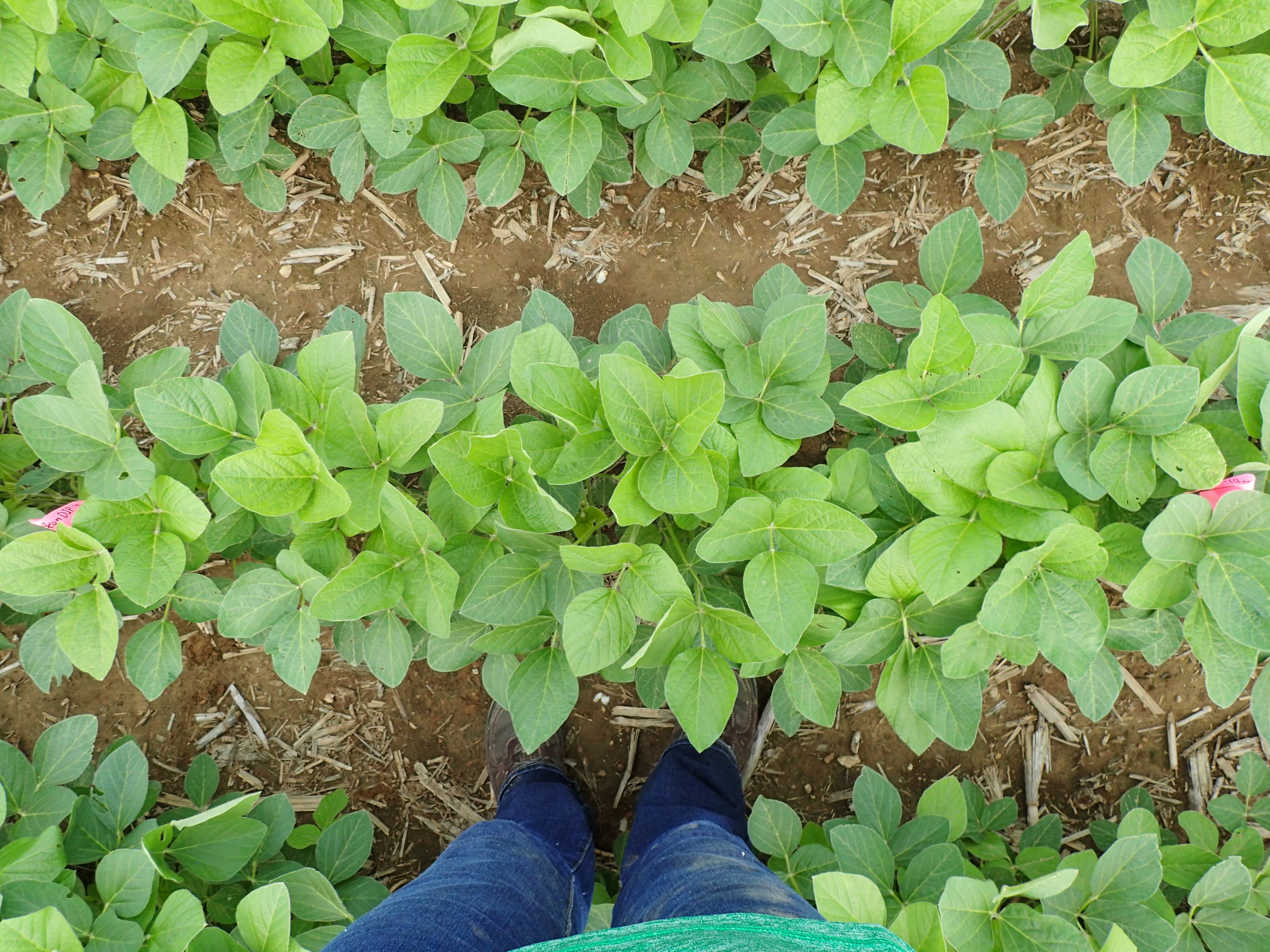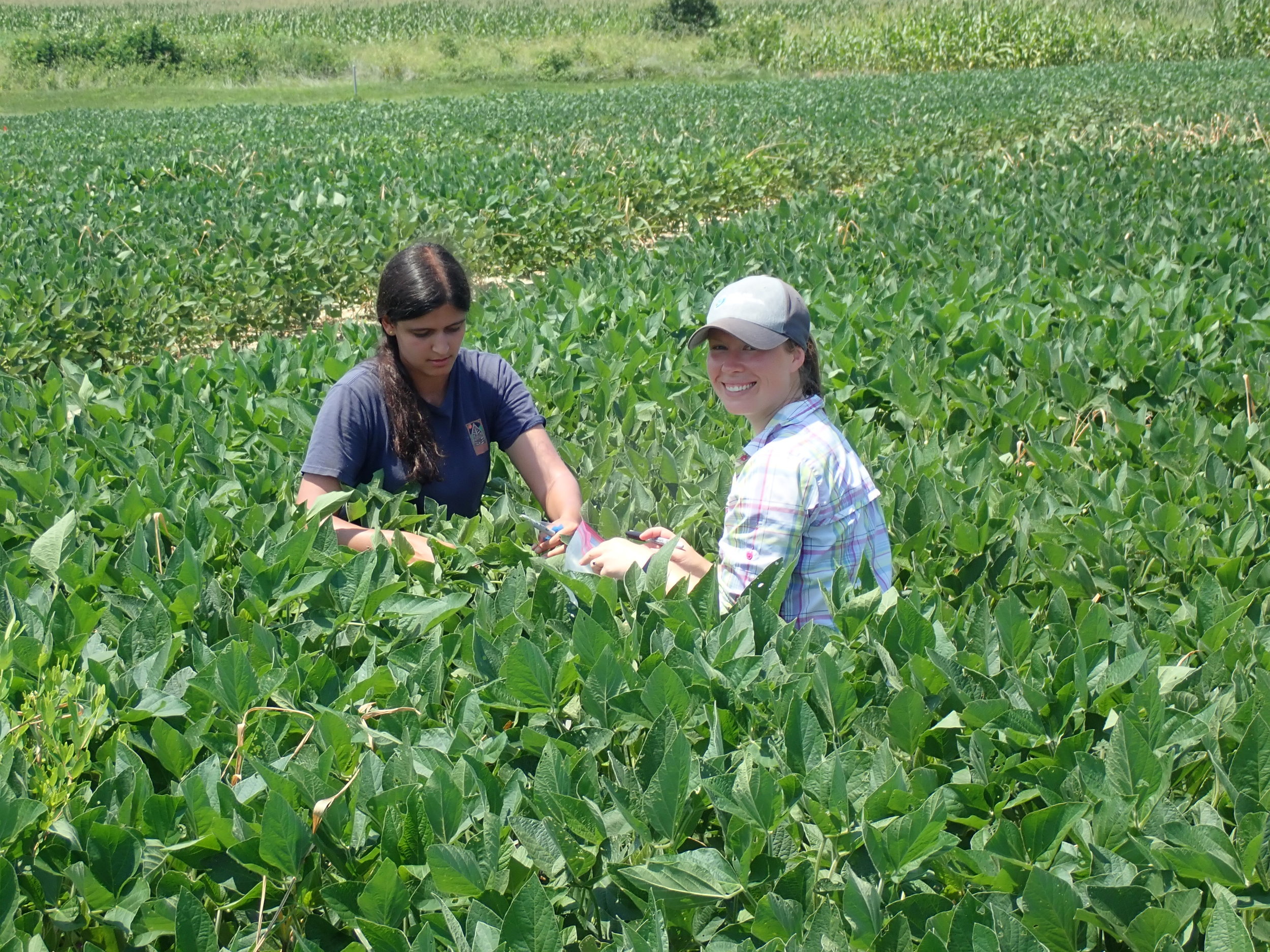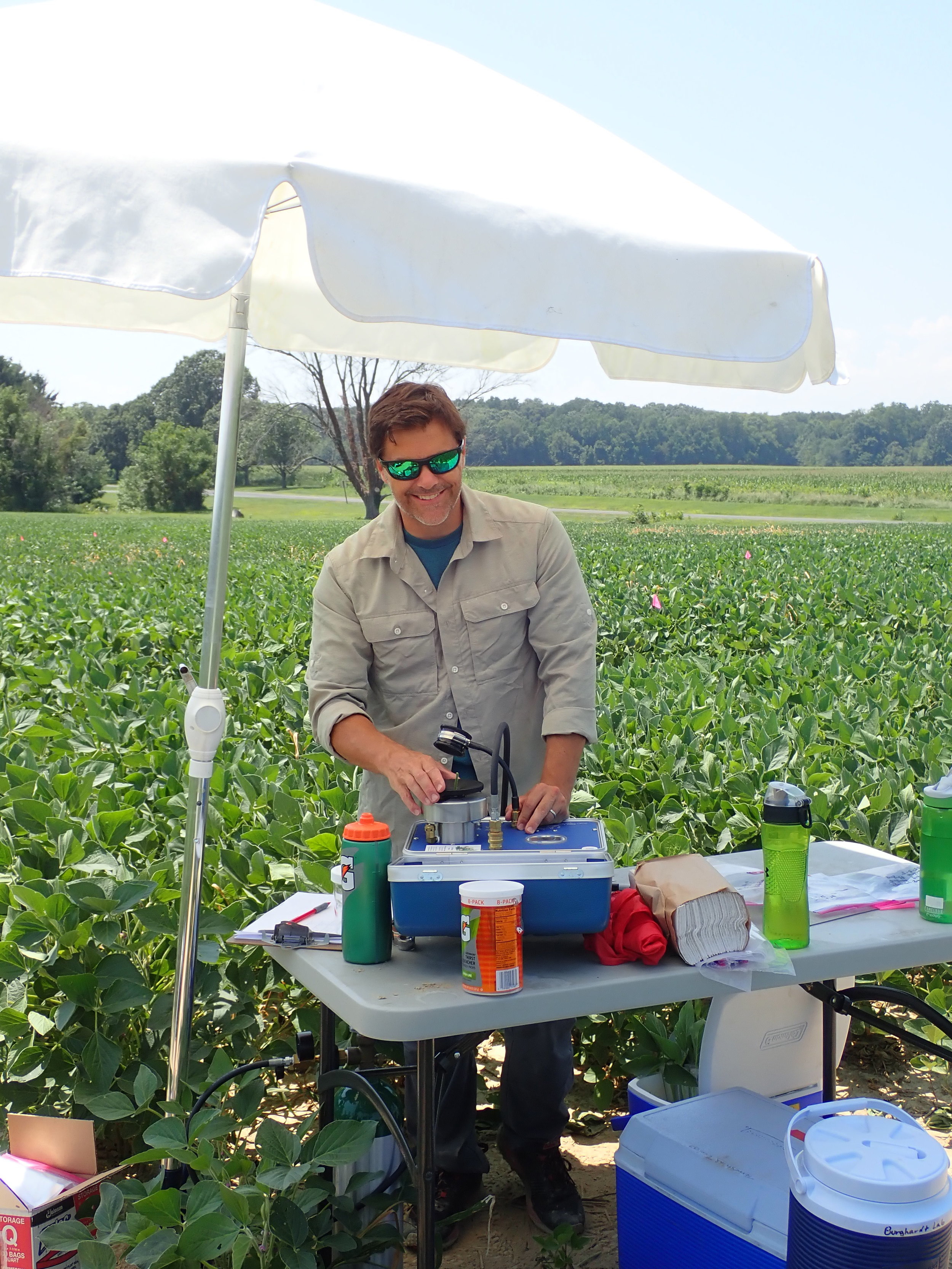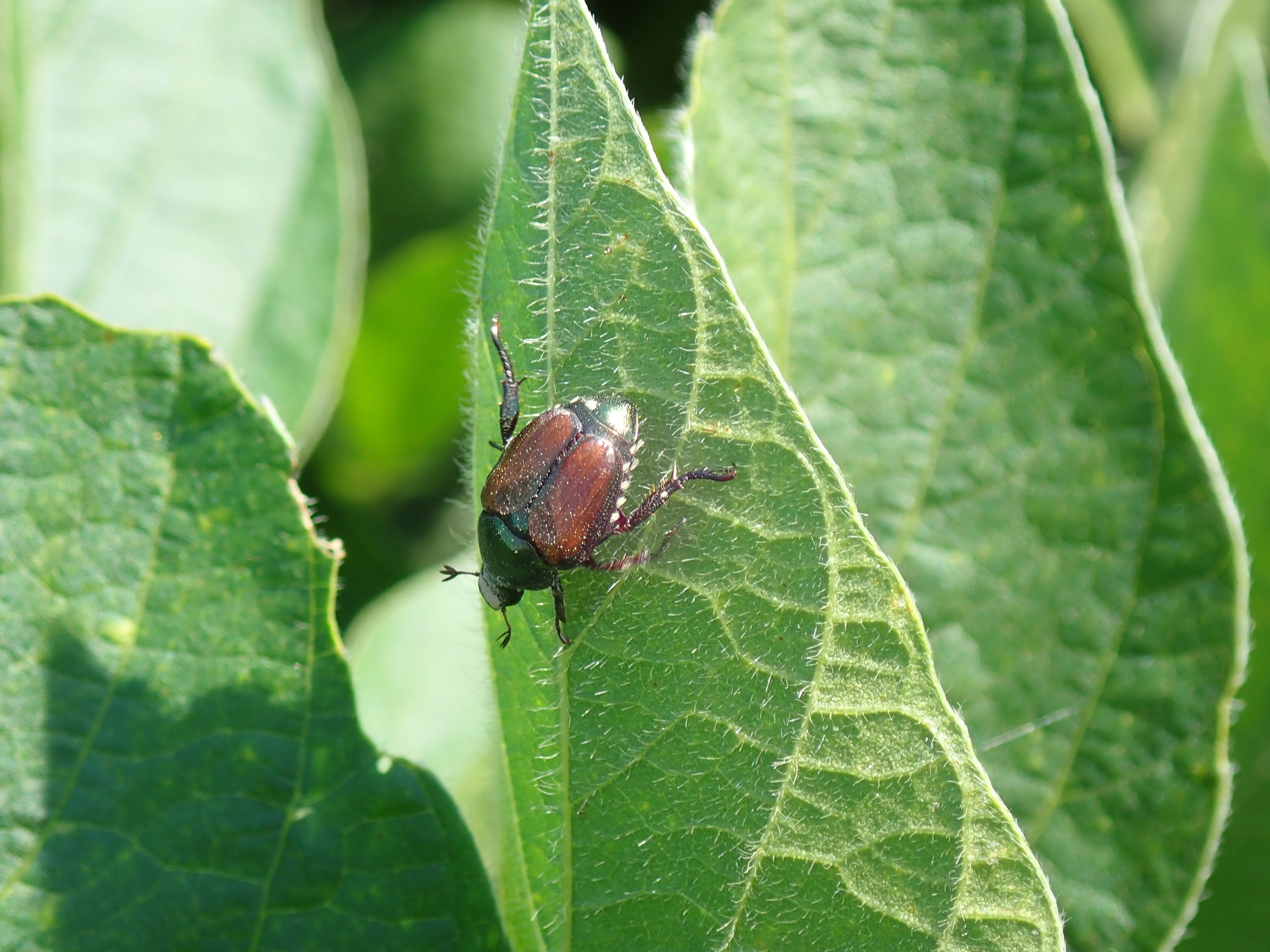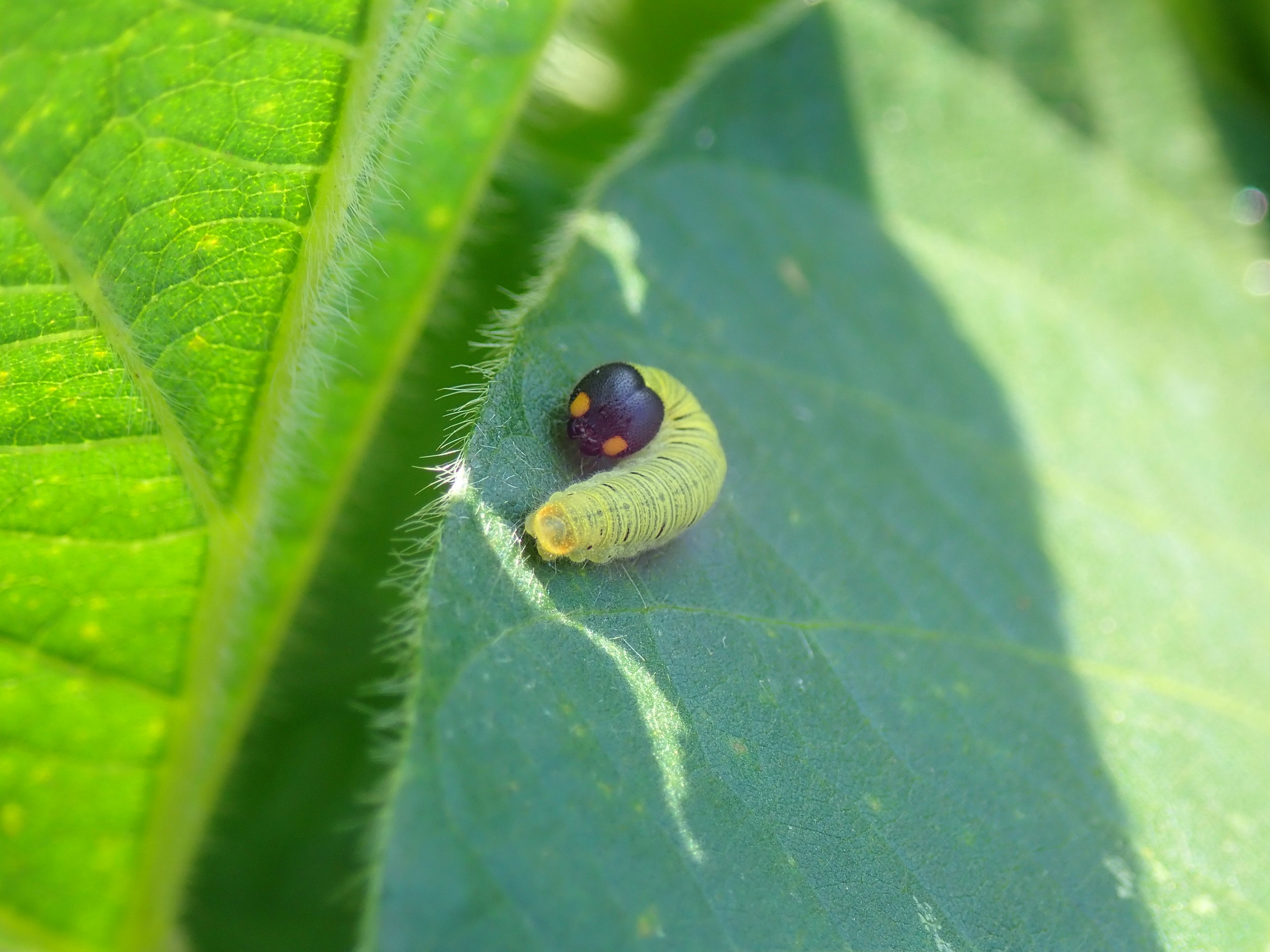Safeguarding soybeans against climate change: Identifying the role of rhizobial diversity in moderating drought and herbivore stress
Funding: USDA/NIFA
People: Brendan Randall; John Parker at the Smithsonian Environmental Research Center, and Kim Komatsu at the University of North Carolina Greensboro
Soybeans are a leading component of global sustainable agriculture and food security because of their high protein content and relatively low fertilizer demands, due to their nitrogen-fixing rhizobial mutualists.
Although soybeans can simultaneously associate with multiple rhizobial strains, and different strains are differentially tolerant of drought and other stressors, nearly all research and agricultural applications emphasize single-strain inoculations. Here, we borrow from Biodiversity-Ecosystem Function theory to predict that rhizobial strain diversity may buffer soybeans against crashes by providing complementary benefits during drought and herbivore stress, a phenomenon termed the “ecological insurance effect”.
We tested this hypothesis with greenhouse experimental assays in combination with distributed surveys in the Maryland Soybean Variety Trial. Specifically, by altering the structure of soybean microbial (rhizobia) communities, we posited improved crop performance and stability and lower costs for farmers through reduced reliance on pesticides, irrigation, and fertilizer.
Pilot Study
Results of a pilot study demonstrated that percent foliar insect damage is reduced for soybean grown with a rhizobial community with greater strain richness. This pattern tended to be stronger for soybean grown at 3°C above ambient temperatures (panel b) than soybean grown at ambient temperatures (panel a). Read the full paper here!
Observational Field Trials
During the summers of 2019, 2020, and 2021, we collected data within the Maryland Soybean Varietal Trial run by Dr. Nicole Fiorellino. We tracked several soy varieties through the years and recorded observational data on plant physiological traits, arthropod communities, herbivore and disease damage, and harvest biomass at 4 replicated sites across Maryland. This allowed us to establish a baseline of field conditions and plant responses as well as compare the effectiveness of seed coat treatments. Soil samples from these soy fields were also used to trap and culture rhizobia for later greenhouse experiments.
Map of field sites across Maryland. Keedysville (Western Maryland REC), Clarksville (Central Maryland REC), Wye REC, Poplar Hill (Lower Eastern Shore REC).
Our results indicated no difference in yield between soybean plants treated with a seed coat seed treatment vs. untreated seeds of the same variety in any year measured (seed treatment effect: F1,304=0.0004; p=0.98).
Greenhouse Experiments
In the summer of 2022, we conducted a series of greenhouse assays at UMD to investigate the influence of different rhizobia strains on plant responses to drought and herbivory. We inoculated soybean plants grown in pots with one of 24 unique strains of rhizobia we collected from the Central Maryland Research & Education Center in Clarksville, MD. We subjected plants to either a watered or drought treatment and exposed half of the plants in a feeding trial to soybean looper caterpillars (Chrysodeixis includens). We then collected a suite of plant functional and performance traits. Our findings revealed that rhizobia strains play a crucial role in mediating plant-insect interactions by altering the effect of drought on caterpillar growth rates. Moreover, we discovered that the effect of drought and herbivory on multivariate plant functional trait expression varies depending on the rhizobia strain a plant is inoculated with. Some strains led plants to express higher levels of drought tolerance traits. In comparison, other strains led to lower levels, underscoring the importance of the type of bacterial plant partner on the ability of plants to tolerate drought and herbivory. From an applied perspective, growers could use more targeted rhizobia strain inoculants depending on their ability to benefit plants across different environments.
These results made us curious about what would happen if we selected a few strains that helped plants express high levels of certain beneficial traits and mixed them. Evidence suggests that diverse nitrogen-fixing symbiont communities can exhibit complementary traits, where different rhizobia partners occupy unique niches depending on their effectiveness at trading fitness benefits with their legume partners. Simply, would we see an effect of increasing rhizobia strain diversity on plant tolerance to drought and herbivory? In the summer of 2023, we completed another series of greenhouse assays at UMD, where we inoculated plants with rhizobia strains used in the previous experiment in single-strain monocultures, two-strain bicultures, and four-strain polycultures. We subjected plants to the same treatments as the previous experiment. We then conducted a feeding trial with soybean loopers and collected an entire suite of plant functional traits. Preliminary findings show that rhizobia strain diversity reduces the variation in caterpillar growth rates in watered and drought stress, suggesting that there may be a stabilization of tolerance plant traits at high diversity levels across watering environments. Overall, this research provides knowledge that could be used to develop locally sourced, diverse rhizobia inoculants that could be utilized in commercial soybean production that provide high-yielding and complementary benefits under climate change.




